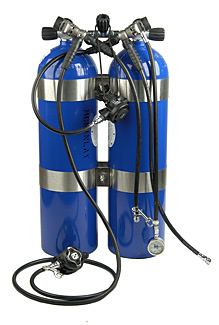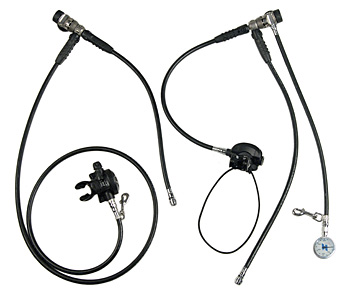Mattboy covered it. The highest first stage you can find will have a flow rate no more than 70 SCFM.
SP measures flow rate with a constant supply pressure, a special valve with large enough flow passages to keep up with the reg and an open LP port (no hose, no second stage). So the connection to the real world is non existant as the tank valve, LP hose and second stage all impose limits on the flow rate that are reached long before the 300 SCFM flow rate of the first stage can be reached.
In practice, 110 SCFM is more than enough to support any diver at any depth reachable on open circuit with enough flow rate to feed the second stage plus some left over for inflators, etc. 150 SCFM is enough to support two divers fully purging two regs simultaneously, but that really only applies to recreational diving as technical dives will have first stages each feeding one second stage. In reality, two divers inhaling simultaneously at depth will use far less than 150 SCFM. The Mk 10 has a flow rate in the 110-120 SCFM flow range and has long been acknowledged to be more than adequate for any technical diving application so 300 SCFM is about 180 SCFM more than you need.
So in short, the high flow rate of the MK 25 and 15% bonus out the top port make divers feel better, but it is basically hype. It does offer a different approach to hose routing, but it is a chicken or the egg argument. When you really look at it, it is a hose routing approach that makes a swivel turreted reg like the Mk 10/15/20/25 useable for technical diving as it avoids havng hoses sprouting in inconvenient directions. It is not an ideal hose routing in the larger scheme of things as the routing offered by just about any first stage with 2 LP ports per side side and an HP port per side like the Mk 17 , Poseiden, etc, allows the hoses to be routed straight down for a cleaner and simpler hose routing that allows better access to the valves.
Consequently the Mk 20/Mk25 is over kill in terms of perfromance and the top port hose routing is a crutch to make the hose routing workable with that style of reg - but is has oddly enough become a reason people dive the reg in the first place. Go figure.
Where a swivel turret reg like the Mk 25 offers advantages on hose routing is on a single tank set up where it angles the hoses partially forward rather than straight out to the sides as will occur if you have a reg like the Mk 17 set up with more than 2 LP hoses. And in that application, you would rarely use the top port as that would require tilting the reg which again with more than 2 LP hoses, puts one of them off at an odd angle.





